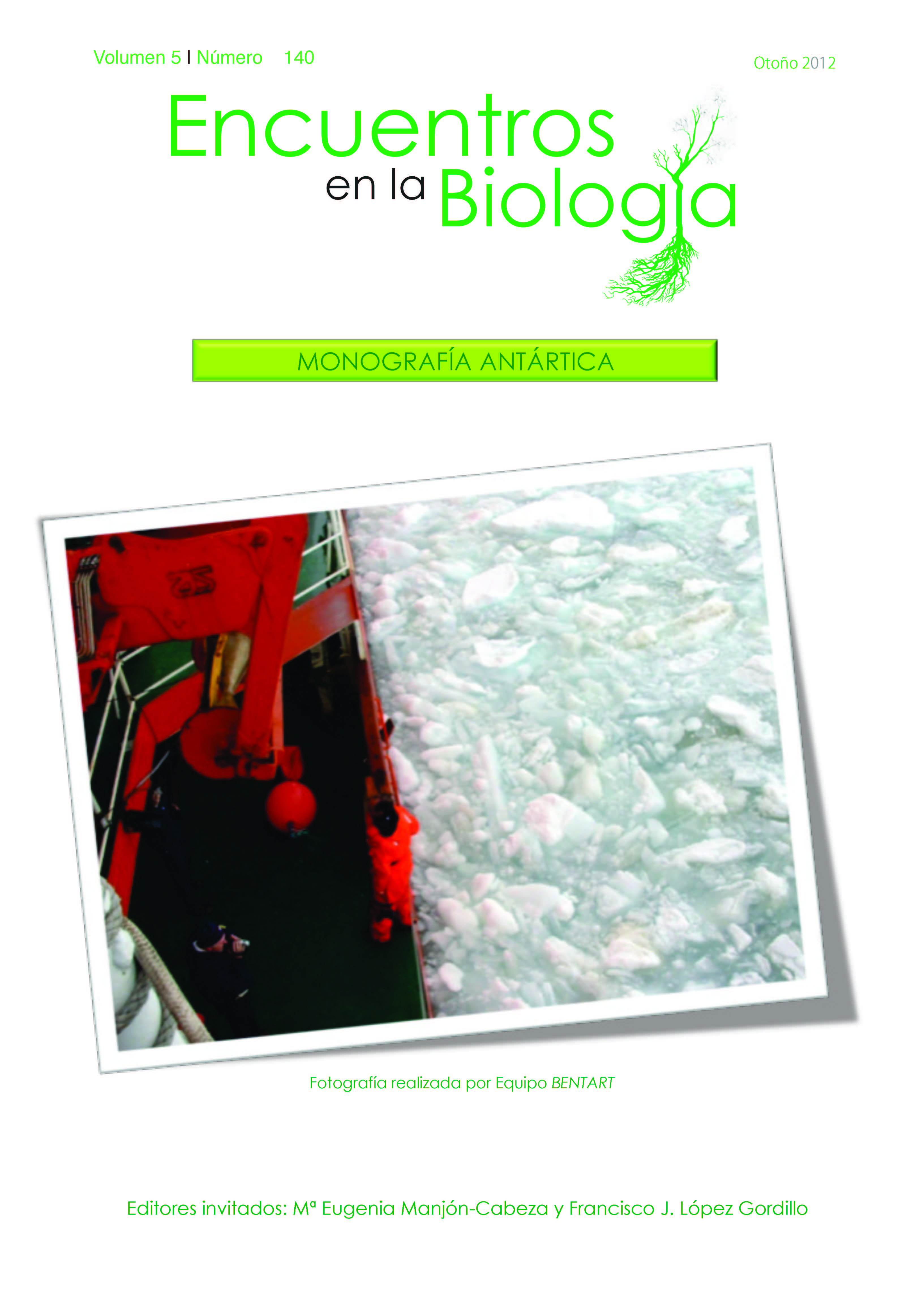Where will 30 million years of evolution end up? Seaweeds, key to the future of Antarctica
Keywords:
30 million, evolution, Seaweeds, key, futurAbstract
Las zonas litorales y sublitorales de la Antártida están dominadas por densas comunidades de macroalgas, con alta diversidad y que producen una gran cantidad de biomasa. Al igual que en otras zonas del planeta, estas algas no sólo constituyen la base alimenticia de numerosos organismos, sino que además conforman hábitats permanentes para muchas especies y son utilizadas como zonas de reproducción y cría para muchas otras que tienen fases de vida en aguas alejadas del litoral. En la Antártida, el ecosistema terrestre está muy restringido, especialmente en cuanto a productores primarios se refiere.
Downloads
Metrics
References
The littoral and sublittoral zones of Antarctica are dominated by dense communities of macroalgae, with high diversity and that produce a large amount of biomass. Just like in other areas of the planet, these algae not only constitute the food base for numerous organisms, but they also form permanent habitats for many species and are used as breeding and rearing areas for many others that have life stages in waters away from the coast. In Antarctica, the terrestrial ecosystem is very restricted, especially in terms of primary producers.
Downloads
Published
How to Cite
Issue
Section
License
Esta obra está bajo licencia internacional Creative Commons Reconocimiento-NoComercial-CompartirIgual 4.0.
Esta revista provee acceso libre inmediato a su contenido bajo el principio de hacer disponible gratuitamente la investigación al público. Todos los contenidos publicados en Encuentros en la Bilogía están sujetos a la licencia Creative Commons Reconocimento-NoComercia-Compartirigual 4.0 cuyo texto completo puede consultar en <http://creativecommons.org/licenses/by-nc-sa/4.0>
Se pueden copiar, usar, difundir, transmitir y exponer públicamente, siempre que:
Se cite la autoría y la fuente original de su publicación (revista, editorial y URL de la obra).
No se usen para fines comerciales.
Se mencione la existencia y especificaciones de esta licencia de uso
Los derechos de autor son de dos clases: morales y patrimoniales. Los derechos morales son prerrogativas perpetuas, irrenunciables, intransferibles, inalienables, inembargables e imprescriptibles. De acuerdo con la legislación de derechos de autor, Encuentros en la Biología reconoce y respeta el derecho moral de los autores/as, así como la titularidad del derecho patrimonial, el cual será cedido a la Universidad de Málaga para su difusión en acceso abierto. Los derechos patrimoniales, se refieren a los beneficios que se obtienen por el uso o divulgación de las obras. Encuentros en la Biología se publica en open access y queda autorizada en exclusiva para realizar o autorizar por cualquier medio el uso, distribución, divulgación, reproducción, adaptación, traducción o transformación de la obra.
Es responsabilidad de los autores/as obtener los permisos necesarios de las imágenes que están sujetas a derechos de autor.
Los autores/as cuyas contribuciones sean aceptadas para su publicación en esta revista conservarán el derecho no exclusivo de utilizar sus contribuciones con fines académicos, de investigación y educativos, incluyendo el auto-archivo o depósito en repositorios de acceso abierto de cualquier tipo.
La edición electrónica de esta revista esta editada por la Editorial de la Universidad de Málaga (UmaEditorial), siendo necesario citar la procedencia en cualquier reproducción parcial o total.

